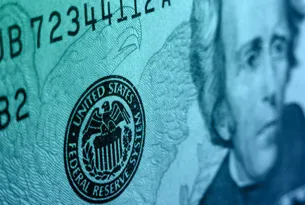Last week I spent some time looking at the length of these rallies in the past and I found something very interesting, says Jack Adamo of Insiders Plus.
Last week, I spent some time looking at the length of these rallies in the past, and I found something very interesting.
Most of them have peaked within four to six weeks, which would put us near the end of this one, but one of them took eleven weeks. It also happened at the end of the year. So, there’s a chance we’ll have to sweat this one out a bit more.
The good news is (only because we’re short), neither the standard “death cross” of the 50- and 200-day moving averages, or any of my proprietary indicators are anywhere near signaling an end to the bear market.
In fact, going back as far as I have charts for the S&P, there have only been two instances where the market dipped this far into bear territory without playing out a full bear market. They were in 1984 and 1998.
The latter was due to the Fed’s massive intervention after the collapse of Long Term Capital Management. I don’t know if any more bailout plans could now have a similar effect. Monetary stimulus is out of bullets, so it would only be the psychology that could swing it.
The bottom line is that the probability is high that this bear market will run its course.
Nonetheless, we must make some preparation in case this is the rare bear that doesn’t. I’ve been putting together a list of companies and ETFs that I would be comfortable owning in the current environment. If the market resumes its recent rally with some strength behind it, we’ll add some of these positions.
They all have exceptionally strong records over the last ten years and made new highs after the 2008 debacle. Some have good dividends as well.
Even if the market goes into full collapse after we open these positions, we can rest assured they will probably make new highs when the unpleasantness is over. I’ll also consider putting stop losses on them if the market gets testy again.
As to closing hedges, I probably won’t grow concerned enough to do too much of that unless the S&P 500 breaches 1,280 again and stays there for a few weeks, but I’m keeping all options open.
Wall Street is blowing its horn about how so many companies are “beating estimates.” Of course, the analysts’ estimates are fed directly to the analysts by the companies and the companies long ago learned to game this practice, deliberately guiding analysts to expectations they know they can beat.
The reports I’ve seen have looked pretty limp. “Adjusted” earnings, which typically exclude anything the company wants to hide, were decent. GAAP earnings were much less so.
Utilities and other high-dividend payers continue to stay near their highs, even when results are weak, because the dividends are the only return investors can rely on.
Dominion Resources, Inc. (D)
The company announced earnings for the three months ended September 30 of 69 cents per share, compared with 98 cents for the same period in 2010.
The company said the decrease in third-quarter earnings was primarily attributable to lower merchant generation margins, lower weather-related sales in regulated electric service territory, and lower contributions from producer services.
Partially offsetting these negatives were higher electric transmission revenues and accretion due to share repurchases. The latter is not my favorite way of seeing earnings bolstered.
As I mentioned above, the shares are still doing well. They should continue to outperform the market and maintain stronger traction against slumping prices. Buy Dominion Resources on pullbacks below $45.
Seaspan Corp. (SSW)
The ship-leasing firm reported normalized third-quarter earnings per share of 29 cents, versus 30 cents in 2010. In the case of Seaspan, “normalized” is a legitimate measure, as GAAP earnings are distorted by interest-rate hedges that will be held to maturity.
The slight dip in profit is due to amortization expenses from new vessels that have not been fully deployed yet, and write-offs from a few older vessels sold at small losses to further modernize the fleet, which is already one of the newest in the world.
The company raised the dividend on its common shares. However, we currently own only the Seaspan Series C 9.50% Cumulative Preferred (SSW-PC) shares, which are doing quite nicely. Buy these preferred shares on pullbacks below $26.50.
Subscribe to Insiders Plus here…
Related Reading:







































